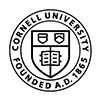ACL
Quadriceps Tendon Anterior Cruciate Ligament Reconstruction in Skeletally Immature Patients
Background: The rate of anterior cruciate ligament (ACL) rupture in active, skeletally immature patients is increasing. Although hamstring tendon autograft (HTA) was previously deemed the gold standard, recent studies have shown HTA to have a high fail- ure rate in this high-risk population of young competitive athletes, and quadriceps tendon autograft (QTA) has yielded excellent preliminary outcomes in some studies examining this population.
Return to Soccer After Acute Anterior Cruciate Ligament Primary Repair
Background: Return to sport (RTS) after treatment of an anterior cruciate ligament (ACL) tear is a critical parameter to assess the outcome of a surgical procedure. However, few studies have investigated RTS after ACL repair.
Analysis of Graft Types Augmented With an Internal Brace for ACL Reconstruction
Background: New techniques are being developed to decrease the failure rate of anterior cruciate ligament (ACL) grafts and pre- vent revision surgery. One such technique involves high-strength suture tape (ST), also referred to as internal bracing. Recent literature has highlighted the use of ST for ACL reconstruction, but no study has compared ST augmentation between graft types.
Effect of Lateral Extra-Articular Procedures Combined With ACL Reconstruction on the Rate of Graft Rupture in Patients Aged Older Than 30 Years
Background: Clinical studies have demonstrated significant advantages of combined anterior cruciate ligament (ACL) recon- struction (ACLR) and lateral extra-articular procedures (LEAPs) over isolated ACLR in terms of reducing graft rupture and reop- eration rates. However, most of the published studies have included young patients, and no studies have focused on patients aged .30 years.
Return to Sport After Pediatric Anterior Cruciate Ligament Reconstruction
Background: Postoperative rehabilitation is an important component of recovery after anterior cruciate ligament (ACL) recon- struction (ACLR), facilitating successful return to sport (RTS) by reducing risk factors for repeat injury.
Proprioception After Primary Repair of the Anterior Cruciate Ligament
Background: Primary repair of the anterior cruciate ligament (ACL) has some potential advantages over the reconstruction tech- nique, which include but are not limited to better knee sensation due to preservation of the natural ACL tissue in patients com- pared with tendon graft. Proprioception is impaired after ACL injuries and the sense of the joint position is lost.
Analysis of Graft Types Augmented With an Internal Brace for ACL Reconstruction
Background: New techniques are being developed to decrease the failure rate of anterior cruciate ligament (ACL) grafts and prevent revision surgery. One such technique involves high-strength suture tape (ST), also referred to as internal bracing. Recent literature has highlighted the use of ST for ACL reconstruction, but no study has compared ST augmentation between graft types.
A Lateral Extra-articular Procedure Reduces the Failure Rate of Revision Anterior Cruciate Ligament Reconstruction Surgery Without Increasing Complications
Background: Lateral extra-articular procedures are becoming increasingly popular in association with anterior cruciate ligament (ACL) reconstruction, especially in patients with persistent rotatory instability and in a high-risk population. However, few studies have investigated the outcomes of the lateral extra-articular procedure as an associated procedure in an ACL revision (R-ACLR) setting and its benefit with respect to isolated intra-articular reconstruction.
Outcomes of Anterior Cruciate Ligament Reconstruction With Independently Tensioned Suture Tape Augmentation at 5-Year Follow-up
Background: Reconstruction using autograft remains the gold standard surgical treatment for anterior cruciate ligament (ACL) injuries. However, up to 10% to 15% of patients will suffer a graft failure in the future. Cadaveric studies have demonstrated that the addition of suture tape augmentation to ACL autograft constructs can increase graft strength and reduce elongation under cyclical loading.
Suture-Augmented ACL Repair for Proximal Avulsion or High-Grade Partial Tears Shows Similar Side-to-Side Difference and No Clinical Differences at Two Years Versus Conventional ACL Reconstruction for Mid-Substance Tears or Poor ACL Tissue Quality
Purpose: To compare objective and subjective clinical outcomes between suture-augmented anterior cruciate ligament (ACL) repair (SAACLR) and conventional ACL reconstruction (CACLR) with minimum 2-year follow-up.
Tape-Reinforced Graft Suturing and Retensioning of Adjustable-Loop Cortical Buttons Improve Quadriceps Tendon Autograft Biomechanics in Anterior Cruciate Ligament Reconstruction: A Cadaveric Study
Purpose: To investigate the biomechanical effects of tape-reinforced graft suturing and graft retensioning for allesoft tissue quadriceps tendon (ASTQT) anterior cruciate ligament reconstruction (ACLR) in a full-construct human cadav-eric model.
Tibial Spine Fractures in the Child and Adolescent Athlete
Background: Tibial spine fractures (TSFs) are uncommon injuries that may result in substantial morbidity in children. A variety of open and arthroscopic techniques are used to treat these fractures, but no single standardized operative method has been identified.
All-Soft Tissue Quadriceps Tendon Autograft in Revision Anterior Cruciate Ligament Reconstruction in Athletes
Background: Revision anterior cruciate ligament (ACL) reconstruction is being performed at an increasing rate. Previous literature has suggested that autograft ACL reconstruction is a better option than allograft in revision surgery, although the optimal autograft choice remains unknown. The all–soft tissue quadriceps tendon (ASTQT) autograft has been found to be an effective option for primary ACL reconstruction. However, few studies have evaluated ASTQT autograft in revision ACL reconstruction.
Combined Anterior Cruciate Ligament Reconstruction and Modified Lemaire Lateral Extra-articular Tenodesis Better Restores Knee Stability and Reduces Failure Rates Than Isolated Anterior Cruciate Ligament Reconstruction in Skeletally Immature Patients
Background: The increase in anterior cruciate ligament (ACL) injuries in pediatric patients and the high failure rate reported in the literature in this population are driving surgeons to search for specific techniques to better restore knee stability. Recent literature has reported that the combination of lateral extra-articular tenodesis (LET) and ACL reconstruction improves outcomes in highrisk patients. However, such advantages in pediatric patients have been infrequently evaluated.
Preoperative Risk Factors for Subsequent Ipsilateral ACL Revision Surgery After an ACL Restoration Procedure
Background: : Anterior cruciate ligament (ACL) revision surgery is challenging for both patients and surgeons. Understanding the risk factors for failure after bridge-enhanced ACL restoration (BEAR) may help with patient selection for ACL restoration versus ACL reconstruction.
ACL Revision with or without IT band.
ACL Revision Plus Lateral Extra-articular Procedure Results in Superior Stability and Lower Failure Rates Than Does Isolated ACL Revision But Shows No Difference in Patient-Reported Outcomes or Return to Sports.
Isolated ACL Reconstruction Versus ACL Reconstruction Combined With Lateral Extra-articular Tenodesis
Background:: Young patients undergoing anterior cruciate ligament (ACL) reconstruction (ACLR) are at a particularly high risk of graft ruptures compared with adults. Recent studies have demonstrated significant reductions in ACL graft rupture rates in highrisk adult populations when a lateral extra-articular procedure is performed, but comparative studies in pediatric and adolescent populations are currently lacking in the literature.
The Addition of Either an Anterolateral Ligament Reconstruction or an Iliotibial Band Tenodesis Is Associated With a Lower Failure Rate After Revision Anterior Cruciate Ligament Reconstruction: A Retrospective Comparative Trial
Purpose: To compare the failure rate in patients who underwent revision anterior cruciate ligament (ACL) reconstruction alone or associated with an extra-articular procedure. Secondary objectives were to compare ACL laxity, patientreported outcome measures, and complication rates in these patients and, subsequently, to compare the outcomes of patients who underwent revision ACL reconstruction associated with anatomical anterolateral ligament (ALL) reconstruction or lateral extra-articular tenodesis (LET).
Acute Anterior Cruciate Ligament Rupture
Background: High-level evidence for short-term outcomes of contemporary anterior cruciate ligament (ACL) suture repair (ACLSR) in comparison with those of ACL reconstruction (ACLR) is scarce. High-level evidence for mid- and long-term results is lacking, whereas outcomes of ACLSR in several historical studies were shown to deteriorate at midterm follow-up after initial good short-term outcomes.
Suture Tape Augmentation of Anterior Cruciate Ligament Reconstruction Increases Biomechanical Stability: A Scoping Review of Biomechanical, Animal, and Clinical Studies
Purpose: To (1) assess the available literature reporting on suture tape augmentation in anterior cruciate ligament (ACL) reconstruction and (2) determine what evidence exists to support and oppose the technique in clinical practice.
Outcomes of Anterior Cruciate Ligament Reconstruction in Patients Older Than 50 Years and Younger Than 30 Years
Purpose: To evaluate the clinical and functional outcomes of ACL reconstruction with autologous hamstring tendon in patients >50 years and <30 years. It was hypothesized that the outcomes would be comparable between these age groups.
Quadriceps tendon autograft for pediatric anterior cruciate ligament reconstruction results in promising postoperative function and rates of return to sports: A systematic review
Purpose: To assess the performance of the quadriceps tendon (QT) autograft in pediatric anterior cruciate ligament reconstruction (ACLR).
Suture Tape Augmentation of Anterior Cruciate Ligament Reconstruction increases biomechanical stability: A Systematic Review of biomechanical, animal and clinical studies
Purpose: The purposes of this scoping review was to (1) assess the available literature reporting on suture tape augmentation in anterior cruciate ligament (ACL) reconstruction and (2) determine what evidence exists to support and oppose the technique in clinical practice.
Independent Suture Augmentation With All-Inside Anterior Cruciate Ligament Reconstruction Reduces Peak Loads on Soft-Tissue Graft. A Biomechanical Full-Construct Study
Purpose: To evaluate the effect of suture augmentation (SA) of 7-mm and 9-mm diameter graft on load sharing, elongation, stiffness, and load to failure for all-inside anterior cruciate ligament reconstruction (ACLR) in a biomechanical Study was funded by Arthrex ID: EMEA-16020. full-construct porcine model.
Revision ACL Reconstruction with the All-Soft Tissue Quadriceps Tendon Autograft has Acceptable Early and Intermediate-Term Outcomes
Purpose: The purposes were to (1) examine early to intermediate-term clinical outcomes and complications of revision anterior cruciate ligament reconstruction (ACLR) using all-soft tissue quadriceps tendon (QT) autografts, and (2) compare quadriceps strength between patients who had hamstring versus patella tendon autografts in their previous reconstruction.
Combined Anterolateral and Anterior Cruciate Ligament Reconstruction Improves Pivot Shift Compared to Isolated Anterior Cruciate Ligament Reconstruction: A Systematic Review and Meta-Analysis of Randomized Controlled Trials
Purpose: The purpose of the current study was to perform a systematic review and meta-analysis of the literature on anterolateral ligament (ALL) reconstruction as it related to techniques, biomechanical properties, and clinical outcomes.
Editorial Commentary: Anterior Cruciate Ligament Hamstring Autografts Should Be Avoided in Patients Younger Than 25 Years Old: Autograft-Allograft Hybrids Remain Controversial
Abstract: Some studies have reported no difference between autograft and hybrid anterior cruciate ligament reconstructions. However, other studies have shown a significantly greater revision rate. Consequently, surgeons are reluctant to perform hybrid reconstructions in younger patients with diminutive hamstring autografts and have turned to other autograft graft sources (e.g., quadriceps tendon, patellar tendon). Until we can perform high-quality prospective studies that can definitively answer this question, we should consider avoiding autograft hamstring reconstructions in patients younger than 25 years old so that we are not faced with the dilemma of implanting an undersized autograft or a hybrid graft, as both may be at increased risk for failure.
Significantly Lower Infection Risk For ACL Grafts Pre-Soaked in Vancomycin Compared to Un-Soaked Grafts: A Systematic Review and Meta-analysis
Purpose: To compare post-operative infection rates following ACL reconstruction performed with grafts pre-soaked in vancomycin versus those without vancomycin.
Return to Sport After ACL Reconstruction With a BTB Versus Hamstring Tendon Autograft: A Systematic Review and Meta-analysis
Background: Anterior cruciate ligament (ACL) tears are debilitating injuries frequently suffered by athletes. ACL reconstruction is indicated to restore knee stability and allow patients to return to prior levels of athletic performance. While existing literature suggests that patient-reported outcomes are similar between bone-patellar tendon-bone (BTB) and hamstring tendon (HT) autografts, there is less information comparing return-to-sport (RTS) rates between the 2 graft types.
Differences in Strength, Patient-Reported Outcomes, and Return-to-Play Rates Between Athletes With Primary Versus Revision ACL Reconstruction at 9 Months After Surgery
Background: Patient-reported outcomes and return-to-play (RTP) rates are inferior after revision anterior cruciate ligament reconstruction (ACLR) compared with primary ACLR.
Arthroscopic anterior cruciate ligament reconstruction is a reliable option to treat knee instability in patients over 50 years old
Purpose: To evaluate return to sport and clinical outcomes with at least 2 years followup after arthroscopic reconstruction ACL in population over 50 years-old.
Does Anterior Cruciate Ligament Reconstruction Protect the Meniscus and Its Repair? A Systematic Review
Background: Anterior cruciate ligament (ACL) tear and meniscal injury often co-occur. The protective effect of early ACL reconstruction (ACLR) on meniscal injury and its repair is not clear. Critical literature review can support or change clinical strategies and identify gaps in the available evidence.
Anterior Cruciate Ligament Reconstruction in Patients Older Than 50 Years: A Systematic Review and Meta-analysis
BACKGROUND: There is no consensus regarding the best treatment approach for middle-aged patients with anterior cruciate ligament (ACL) injuries. Chronic ACL-deficient knees are often associated with instability as well as secondary meniscal and cartilage lesions.
Healing Status of Meniscal Ramp Lesion Affects Anterior Knee Stability After ACL Reconstruction
BACKGROUND: Although the biomechanical importance of the ramp lesion in the anterior cruciate ligament (ACL)-deficient knee has been demonstrated, there is no clear consensus on the appropriate treatment for ramp lesions during ACL reconstruction.
Partial Lateral Meniscectomy Affects Knee Stability Even in Anterior Cruciate Ligament-Intact Knees.
BACKGROUND: The effects of a partial lateral meniscectomy on knee kinematics and forces in the lateral meniscus are critical to understand. The purpose of this study was to quantify the effects of varying sizes of partial lateral meniscectomies of the posterior horn and a total lateral meniscectomy on knee kinematics and resultant forces in the lateral meniscus.
Lateral Extra-articular Tenodesis Reduces Failure of Hamstring Tendon Autograft Anterior Cruciate Ligament Reconstruction: 2-Year Outcomes From the STABILITY Study Randomized Clinical Trial.
BACKGROUND: Persistent anterolateral rotatory laxity after anterior cruciate ligament (ACL) reconstruction (ACLR) has been correlated with poor clinical outcomes and graft failure.
Anterior Cruciate Ligament Reconstruction in High School and College-Aged Athletes: Does Autograft Choice Influence Anterior Cruciate Ligament Revision Rates?
BACKGROUND: Physicians' and patients' decision-making process between bone-patellar tendon-bone (BTB) and hamstring tendon autografts for anterior cruciate ligament (ACL) reconstruction (ACLR) may be influenced by a variety of factors in the young, active athlete.
Outcomes of Quadriceps Tendon With Patellar Bone Block Anterior Cruciate Ligament Reconstruction in Adolescent Patients With a Minimum 2-Year Follow-up.
BACKGROUND: The incidence of anterior cruciate ligament (ACL) injury in the adolescent population is increasing. The quadriceps tendon-patellar bone autograft (QPA) has been established as a reliable graft choice for ACL reconstruction in the adult population.
Risk of Secondary ACL Injuryin Adolescents Prescribed FunctionalBracing After ACL Reconstruction
Background:There is a high incidence of a secondary anterior cruciate ligament (ACL) injury in unbraced adolescent athletes.Little is known about the effect of functional bracing with regard to the risk of secondary ACL injuries among adolescents.
Transphyseal Anterior Cruciate Ligament Reconstruction in the Skeletally Immature
BACKGROUND: It is unclear what the optimal graft choice is for performing anterior cruciate ligament (ACL) reconstruction in askeletally immature patient.
Complications After Anterior Cruciate Ligament Reconstruction and Their Relation to the Type of Graft: A Prospective Study of 958 Cases
BACKGROUND: Complications and adverse events after anterior cruciate ligament (ACL) reconstruction are well known, but they have been underestimated in previous studies.
Knee Extension Does Not Reliably ReduceAcute Type II Tibial Spine Fractures
Background: Type II tibial spine avulsion (TSA) fractures have traditionally been managed by first attempting to achieve closedreduction with extension and immobilization, with surgical indications reserved for those who fail to reduce within 3 mm. However,the frequency with which appropriate reduction can be achieved is largely unknown.
Compliance in post-operative rehabilitation is a key factor for return to sport after revision anterior cruciate ligament reconstruction
PURPOSE: To assess the rate of return to sport (RTS) following revision Anterior Cruciate Ligament Reconstruction (ACLR) in a rehabilitation-based cohort of patients. A secondary goal of the study was to evaluate the association between compliance in post-operative rehabilitation and RTS rate.
Effect of Delayed Primary Anterior Cruciate Ligament Reconstruction on Medial Compartment Cartilage and Meniscal Health
Background: The time required to develop a secondary cartilage or meniscal injury in the medial compartment after anterior cruciate ligament (ACL) injury is not well understood.
Anterior Cruciate Ligament Reconstruction in Young Female Athletes: Patellar Versus Hamstring Tendon Autografts.
Backgroung: Female athletes are 2 to 8 times more prone to anterior cruciate ligament (ACL) rupture than males. Furthermore, reinjury to the ipsilateral or contralateral knee can occur in >20% of athletes. Female sex and younger age are known risk factors for graft failure. The optimal graft choice for young females remains unknown and poorly studied.
Ramp Lesions of the Medial Meniscus in Patients Undergoing Primary and Revision ACL Reconstruction: Prevalence and Risk Factors.
Background: Ramp lesions are peripheral tears of the posterior horn of the medial meniscus that involve the meniscocapsular attachments or red-red zone and typically occur in conjunction with anterior cruciate ligament (ACL) ruptures.
A Randomized Clinical Trial Comparing Patellar Tendon, Hamstring Tendon, and Double-Bundle ACL Reconstructions: Patient-Reported and Clinical Outcomes at 5-Year Follow-up
Background: At 5 years, we found no significant difference in the quality-of-life outcome among the patellar tendon, hamstring tendon, and double-bundle techniques for ACL reconstruction. Significantly more patients in the hamstring tendon and double-bundle groups experienced traumatic graft reinjury compared with the patellar tendon group. There was a trend toward a higher percentage with normal and nearly normal IKDC grades in the patellar tendon group compared with hamstring tendon and double-bundle groups.
Effect of Delayed Primary Anterior Cruciate Ligament Reconstruction on Medial Compartment Cartilage and Meniscal Health.
Purpose: To determine the association between time delay until ACL reconstruction and the presence of medial compartment Outerbridge grade 3 or 4 chondral injury or medial meniscal tear requiring treatment.
Quadriceps Recovery After Anterior Cruciate Ligament Reconstruction With Quadriceps Tendon Versus Patellar Tendon Autografts.
PURPOSE: The purpose of this study was to compare quadriceps recovery and functional outcomes in patients with QT versus bone-patellar tendon-bone (BPTB) autografts. The hypothesis was that those with QT autografts would demonstrate superior outcomes.
Outcomes of Grade III Medial Collateral Ligament Injuries Treated Concurrently With Anterior Cruciate Ligament Reconstruction: A Multicenter Study.
PURPOSE: To evaluate differences in repair and nonoperatively managed grade III medial collateral ligament (MCL) injuries during anterior cruciate ligament (ACL) reconstruction.
Post-traumatic osteoarthritis diagnosed within 5 years following ACL reconstruction.
PURPOSE: The purpose was to calculate the incidence of osteoarthritis in individuals following Anterior Cruciate Ligament Reconstruction (ACLR) in a large, national database and to examine the risk factors associated with OA development.
Age over 50 years is not a contraindication for anterior cruciate ligament reconstruction.
PURPOSE: To report clinical and functional results of ACL reconstruction in patients over 50 years old and investigate the influence of surgery on osteoarthritis progression in this cohort of patients.
Revision ACL reconstruction using quadriceps or hamstring autografts leads to similar results after 4 years: good objective stability but low rate of return to pre-injury sport level.
PURPOSE: Due to the increased importance of revision ACL reconstruction, this study aims to evaluate the outcome 4 years after the surgery, compare two revision strategies and identify factors that influence the results.
Meniscal and Chondral Pathology Associated With Anterior Cruciate Ligament Injuries
Anterior cruciate ligament (ACL) ruptures are commonly associated with meniscal and articular cartilage injuries, and the presence of these defects influences both short- and long-term outcomes. Multiple variables are predictive of this pathology including time from injury, age, and sex. Revision ACL reconstructions demonstrate higher rates of chondral injury than primary reconstructions. Menisci are important secondary stabilizers of the knee in the setting of ACL deficiency, and specific tear types are more consistently associated with ACL injury.
Delayed ACL Reconstruction in Patients ≥40 Years of Age Is Associated With Increased Risk of Medial Meniscal Injury at 1 Year.
Purpose: Anterior cruciate ligament (ACL) tears in the pediatric and young adult ACL-deficient knee are often associated with meniscal or chondral injury with delayed time to surgery. The incidence of ACL reconstruction performed in patients aged ≥40 years is rising, and it is unclear if delayed surgery in this cohort similarly affects the health of the meniscus and cartilage.
Patients older than 50 years had similar results of knee strength and anteroposterior stability after ACL reconstruction compared to younger patients.
Purpose: To evaluate knee strength, ligament stability, and functional outcomes in patients older than 50 years who underwent anterior cruciate ligament (ACL) reconstruction, and to compare these results with those obtained from a younger patient group ( <40 years).
Relationship Between Time to ACL Reconstruction and Presence of Adverse Changes in the Knee at the Time of Reconstruction.
Background: Treatment of patients with anterior cruciate ligament (ACL) injuries is often complicated by secondary damage to the meniscus and cartilage.
Low Rates of Return to Preinjury Sport After Bilateral Anterior Cruciate Ligament Reconstruction.
Background: Patients with bilateral anterior cruciate ligament (ACL) injuries tend to report worse results in terms of knee function and quality of life as compared with those with unilateral injury. There are limited data regarding return to preinjury sport in this group.
Lateral Meniscal Posterior Root Repair With Anterior Cruciate Ligament Reconstruction Better Restores Knee Stability.
Background: The effect of lateral meniscal posterior root tear and repair-commonly seen in clinical practice in the setting of anterior cruciate ligament (ACL) reconstruction-is not known.
Epidemiological Evaluation of Meniscal Ramp Lesions in 3214 Anterior Cruciate Ligament-Injured Knees From the SANTI Study Group Database: A Risk Factor Analysis and Study of Secondary Meniscectomy Rates Following 769 Ramp Repairs.
Background: Ramp lesions are characterized by disruption of the peripheral meniscocapsular attachments of the posterior horn of the medial meniscus. Ramp repair performed at the time of anterior cruciate ligament reconstruction (ACLR) has been shown to improve knee biomechanics.
Preoperative and Intraoperative Predictors of Long-Term Acceptable Knee Function and Osteoarthritis After Anterior Cruciate Ligament Reconstruction: An Analysis Based on 2 Randomized Controlled Trials.
Purpose: To determine preoperative predictors of long-term acceptable knee function and the development of osteoarthritis (OA) in long-term follow-up after anterior cruciate ligament (ACL) reconstruction.
Bone–Patellar Tendon–Bone Versus Hamstring Tendon Autografts for Primary Anterior Cruciate Ligament Reconstruction
Background: Previous meta-analyses have compared bone–patellar tendon–bone (BPTB) with hamstring tendon (HT) autografts for primary anterior cruciate ligament reconstruction (ACLR).
Bone–patellar tendon–bone autograft could be recommended as a superior graft to hamstring autograft for ACL reconstruction in patients with generalized joint laxity: 2- and 5-year follow-up study
Purpose The present study aimed to compare 2- and 5-year outcomes of ACL reconstruction between patients with and without generalized joint laxity and to perform comparative evaluation between two types of grafts used for ACL reconstruction in patients with generalized joint laxity.
Over 90 % of children and adolescents return to sport after anterior cruciate ligament reconstruction: a systematic review and metaanalysis
Purpose To evaluate the rate at which children and adolescent athletes return to sporting activities after anterior cruciate ligament (ACL) reconstruction.
Quad Tendon Systematic Review
Purpose:To systematically review the current evidence to ascertain whether quadriceps tendon autograft (QT) is a viable option in anterior cruciate ligament reconstruction.
Quadriceps Tendon Autograft in Anterior CruciateLigament Reconstruction:
Purpose:To systematically review the current evidence to ascertain whether quadriceps tendon autograft (QT) is a viable option in anterior cruciate ligament reconstruction.

















